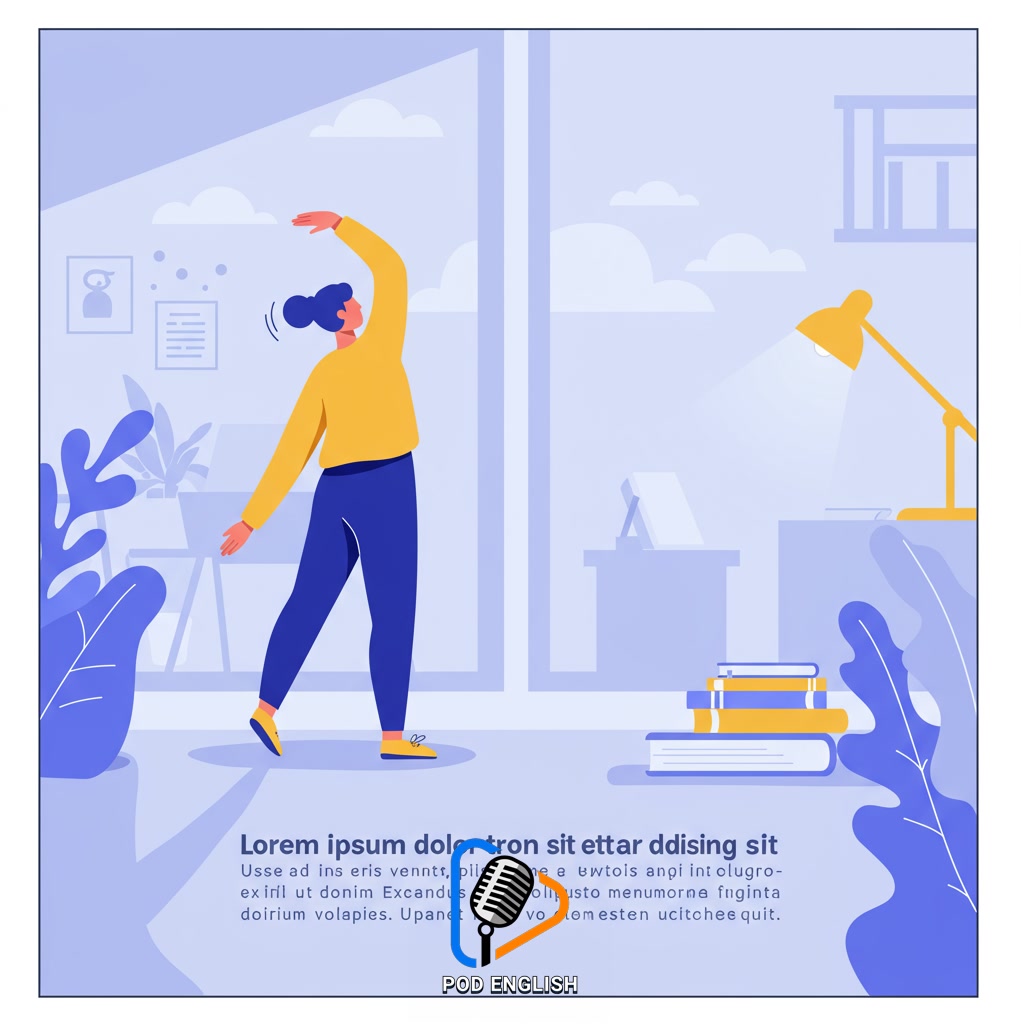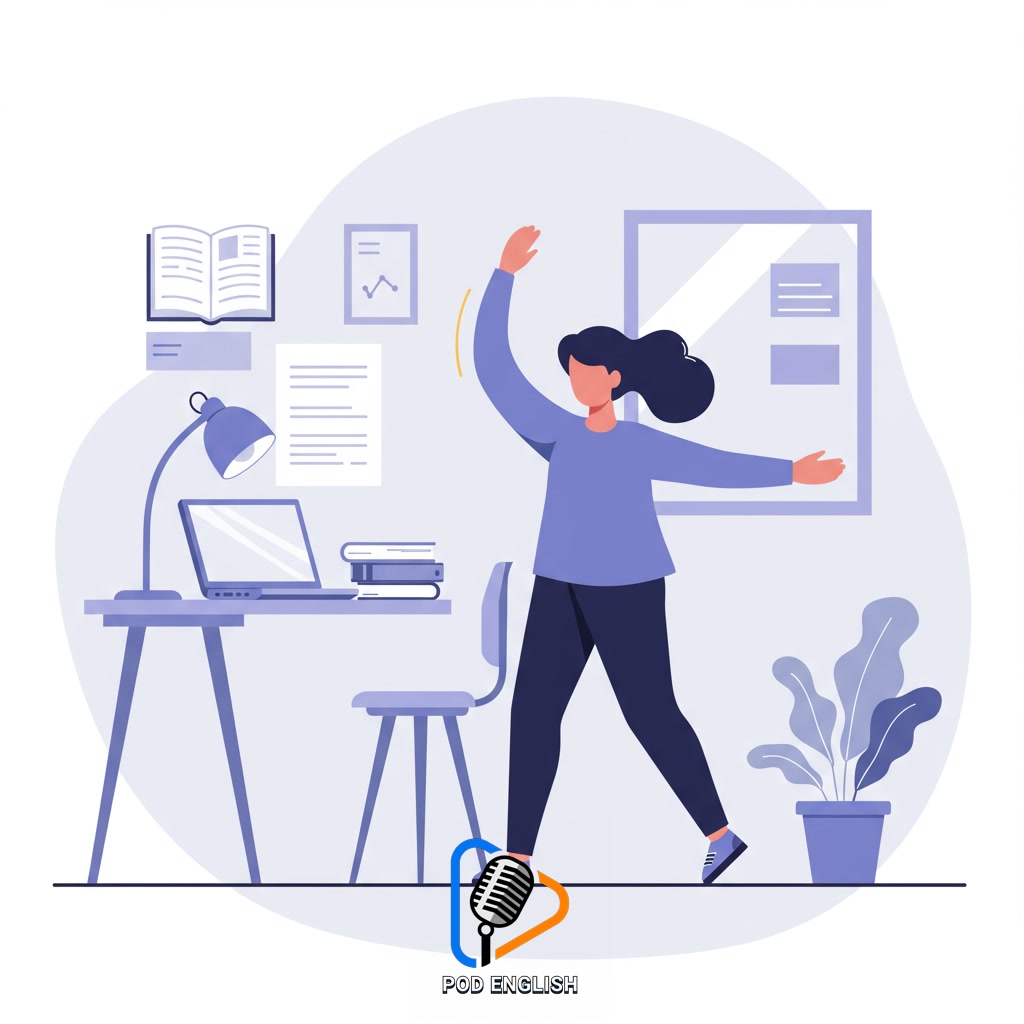Learn English
Active Study Breaks: Refresh Your Mind for English Learning

Active study breaks are essential for maintaining focus and energy when learning English. Incorporating short, active pauses can effectively refresh your mind, improving concentration and retention. These strategic breaks help prevent mental fatigue and enhance the overall productivity of your English language study time.
Table of Contents
- Section 1: The Importance of Study Breaks for Effective Learning
- Section 2: What Defines an Active Study Break?
- Section 3: How Active Breaks Specifically Benefit English Learning
- Section 4: Practical Active Break Ideas for English Learners
- Section 5: Integrating Active Breaks into Your English Study Routine
- Section 6: Making Your Active Breaks Count
Section 1: The Importance of Study Breaks for Effective Learning
Study breaks are not merely pauses; they are an essential, active part of effective learning, particularly when tackling a subject as dynamic as English. Our cognitive capacity for sustained focus is finite. Pushing through fatigue without breaks leads to decreased concentration, increased errors, and a reduced ability to process and retain new information, such as vocabulary, grammar structures, or listening comprehension details. Incorporating regular, short breaks allows your brain to consolidate recent learning, recover from mental strain, and prepare for the next study session. This strategic approach prevents burnout and significantly enhances your ability to maintain focus, absorb complex material, and make consistent progress in your English language journey. Think of breaks as a tool to sharpen your mental focus, not interrupt your study flow.

Section 2: What Defines an Active Study Break?
Unlike passive breaks spent scrolling on a phone or watching videos, an active study break involves intentionally engaging your body or a different part of your brain away from your study materials. It’s about movement, a change of scenery, or a different type of mental engagement. This could be a short walk, stretching, doing a few quick exercises, listening to music while tidying up, or even having a brief, non-English-related chat with someone. The key is that it’s a conscious shift from the focused, sedentary activity of studying English. These breaks are typically short, perhaps 5-15 minutes, designed to refresh your energy and perspective rather than becoming a prolonged distraction. They actively prepare your mind to return to your English learning with renewed focus and clarity.

Section 3: How Active Breaks Specifically Benefit English Learning
Building on the idea of intentional engagement, active breaks specifically boost English learning by combating the mental fatigue that often sets in during focused study. Engaging in physical activity like stretching or a short walk increases blood flow to the brain, enhancing alertness and cognitive function crucial for absorbing new vocabulary and grammar rules. These pauses prevent burnout, allowing you to return to your materials with a clearer mind and improved concentration, making memorization and comprehension more effective. Moreover, some active breaks could even subtly reinforce learning, such as listening to an English song or simple podcast while moving, keeping the language active in your brain without the intensity of formal study. Ultimately, these strategic interruptions make your English study sessions more productive and sustainable.

Section 4: Practical Active Break Ideas for English Learners
Building on the idea of intentional engagement, active breaks specifically boost English learning by combating the mental fatigue that often sets in during focused study. Engaging in physical activity, even for just a few minutes, helps to increase blood flow to the brain, improving alertness and cognitive function. Practical ideas include simple stretches at your desk, a short walk around the room or outside, doing a few jumping jacks, or even just standing up and moving around. Mindful breathing exercises or a quick dance to an English song can also be invigorating. The key is to interrupt prolonged sitting and intense focus with movement or a different kind of mental reset, preparing your mind to absorb more English when you return to your materials.

Section 5: Integrating Active Breaks into Your English Study Routine
Building on the idea of intentional engagement, active breaks specifically boost English learning by combating the mental fatigue that often sets in during focused study. Engaging in physical activity, even for just 5-10 minutes, helps to increase blood flow to the brain, which can improve alertness and cognitive function. Integrating these breaks is key: plan them into your study schedule, perhaps after completing a challenging grammar exercise or before starting a new vocabulary list. Simple actions like standing up and stretching, walking around the room, or doing a few light exercises away from your desk can significantly refresh your mind. These short, active pauses prevent you from feeling overwhelmed and help maintain a higher level of concentration and energy throughout your English study session, making your learning more effective and enjoyable.

Section 6: Making Your Active Breaks Count
Making your active breaks truly effective for English study involves choosing the right activities. Instead of just passively scrolling through social media, opt for something that gets your body moving or shifts your focus in a non-stagnant way. A quick five-minute walk around the room, some simple stretching exercises, or even listening to a short, energetic song in English can make a significant difference. The key is to break the sedentary study posture and give your brain a different kind of stimulus. This physical or sensory change helps clear mental fatigue, reduce eye strain, and improve circulation, preparing you to return to your books or screen with renewed concentration and a more receptive mind for absorbing new language material.














